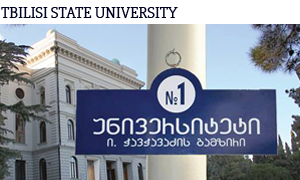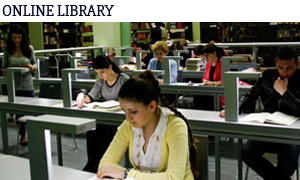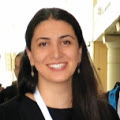
FACULTY OF EXACT AND NATURAL SCIENCES
Tbilisi State University and the University of GÖttingen Continue Multi-Year Collaboration
Few people may know that since its foundation in 1918, the first Georgian university has had relations with leading European universities. Just a year after its foundation, two brothers – Ivane and Alexander Nikuradze – left for Germany to take up their studies at the University of Göttingen, which was known for its institutes of mathematics and physics. Ivane Nikuradze soon became the founder of modern hydrodynamics and aerodynamics; as a distinguished student of Professor Ludwig Prandtl, he successfully defended his PhD thesis on “Observations on Speed Distribution in Turbulent Flows”. He and his doctoral advisor participated in the establishment of the Kaiser Wilhelm Institute, today known as the Max Planck Institute. Later he was appointed Head of the Department at the same institute. Ivane Nikuradze was the first Georgian student to arrive in Göttingen as a citizen of independent Georgia. As a result of his diligent work, he laid the foundation for a successful launch of relations between the two universities. His younger brother, Alexander Nikuradze, became Professor of solid state physics at the Universities of Berlin and Munich.
 Since 2010 this century-old relationship between Tbilisi State University and the University of Göttingen has further intensified. According to an agreement signed by the two universities, students can accumulate the credits necessary for PhD programs in both universities, and after defending a thesis at Tbilisi State University they receive PhD degrees from both universities.
Since 2010 this century-old relationship between Tbilisi State University and the University of Göttingen has further intensified. According to an agreement signed by the two universities, students can accumulate the credits necessary for PhD programs in both universities, and after defending a thesis at Tbilisi State University they receive PhD degrees from both universities.
Presently, seven postgraduates from the TSU Faculty of Exact and Natural Sciences are carrying out doctoral studies at the University of Göttingen. Among them is Maia Svanadze, who began her studies at the University of Göttingen in 2010 as a PhD student. There she took part in a scientific project in the Institute of Mathematics – “Mathematical Structures in Modern Quantum Physics” – and simultaneously worked on her thesis – “Non-Classical Problems of Linear Elasticity Theory”.
Georgian scientists have made a significant contribution to the three-century development of the elasticity theory. The achievements of the Georgian school of mathematics and research methods created by Niko Muskhelishvili, Ilia Vekua and Victor Kupradze in elasticity theory are internationally recognized. The scientific results of this school have made a huge contribution to the development of classical elasticity theory and generalized the boundary integral equation method (method of potentials). This method enables the study of both classical elasticity theory and modern mathematical theories for elastic materials with microstructure.
The very first article in elasticity theory by a Georgian mathematician, Niko Muskhelishvili, was published in 1915, exactly 100 years ago.


Today, the wide use of elastic materials in engineering, technology, geophysics, medicine and biology necessitates the creation of create mathematical models of these materials for intensive study. Over the last decade several interesting models have been created, taking several fields into consideration. This is why Maia Svanadze decided to study the problems of these models using a research method developed by the Georgian school of mathematics. She researched the boundary value problems of the theory of linear thermo-viscoelasticity for Kelvin-Voigt materials with voids. In particular, she established Sommerfeld-Kupradze type radiation conditions and obtained Green’s formulas and integral representations of the Somigliana type of regular vector and classical solutions. The uniqueness theorems of internal and external boundary value problems of steady vibrations in the linear theories of viscoelasticity and thermoviscoelasticity for Kelvin-Voigt materials with voids were proved; basic properties of plane harmonic waves in the linear theory of viscoelasticity for Kelvin-Voigt materials with voids were also established.
These research results were published in peer-reviewed scientific journals, particularly the Journal of Elasticity, Mechanics Research Communications and the Journal of Thermal Stresses.
Six more researchers from TSU collaborate in common projects between the Tbilisi State University and the University of Göttingen. Scientists from the University of Göttingen also have other contacts with Tbilisi State University – they meet Georgian students, deliver lectures for them and – when there is interest and support from international programs – they enable talented Georgian students to continue their studies in Germany.




